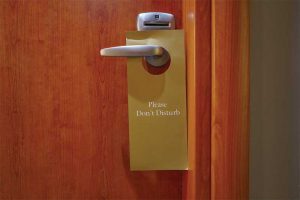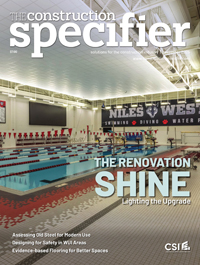Unlocking BHMA’s updated standards

One of the revisions to this standard includes finish requirements removed and consolidated in A156.18-2020, which provides a comprehensive table with finish code numbers, descriptions, and equivalent finishes. Hardware products have mechanical requirements, but they must also have a certain aesthetic appeal, which is why various finish tests are performed. For example, a finish test can include salt spray or humidity explorations, and the standards would include instructions on how to properly execute these tests within the appropriate amount of time, etc. However, with this revision, which was applied to the four standards, the finish requirements can now be found in A156.18.
Another revision to this standard was updated references to ASTM F476, Standard Test Methods for Security of Swinging Door Assemblies. BHMA references many test methods in ASTM F476 and when a test method changes, related updates need to be made to the affected standards. In addition to this update, definitions in the standard were synched with ANSI/BHMA A156.13. There is a constant effort to ensure BHMA provides standard industry definitions for products. If one standard includes a definition that may differ, even the slightest, from the same term in another standard, then revisions are made to keep them synonymous. Other revisions made to this standard include editorial corrections such as a re-arrangement of paragraph four and added paragraph numbers in Section 10 and 11.
ANSI/BHMA A156.12, Interconnected Locks
These products are commonly used to meet building and fire code requirements, such as adhering to a single releasing motion to unlatch a door for egress. Interconnected locks withdraw the deadbolt at the same time as a person unlatches a door; these locks exist so anyone who needs to exit a building can do so, especially during unforeseen situations. These are important for commercial buildings to avoid any confusion or unfamiliarity with door functions to a respective building.
In a residential perspective, interconnected locks are primarily used for multi-family buildings, where the risk of fires or other emergency situations may be higher. Commercial locks, with few exceptions, are designed so there is one motion to exit a building even when the door is locked from the outside. The accompanying standard for this is A156.4, Single Motion to Egress, which describes the requirements for door hardware to comply with such codes. This
is mandated in case of panic situations, emergencies, and to improve accessibility.








